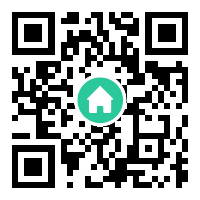The Rise of Telegram Groups in Modern Communication
Telegram groups have emerged as a cornerstone of digital communication, offering users a versatile platform for collaboration, information sharing, and community building. Unlike traditional social media platforms, Telegram’s emphasis on privacy, customization, and scalability has made it a preferred choice for individuals, businesses, and activists alike. With features like encrypted messaging, large member capacities, and bot integrations, Telegram groups cater to diverse needs—from casual hobbyist chats to organized professional networks. This article explores the multifaceted role of Telegram groups, their advantages, challenges, and their impact on how people connect in the digital age.
Versatility and Features of Telegram Groups
One of the defining characteristics of Telegram groups is their adaptability. A single group can host up to 200,000 members, a stark contrast to the member limits imposed by platforms like WhatsApp. This scalability makes Telegram ideal for large-scale communities, such as open-source project discussions, fan clubs, or educational forums. Additionally, Telegram groups support granular permissions—admins can restrict messaging privileges, enable anonymous posting, or even appoint multiple moderators to maintain order. The integration of bots further enhances functionality, automating tasks like event scheduling, content moderation, or polling. For instance, cryptocurrency communities often use bots to track market trends directly within their Telegram groups, streamlining real-time decision-making.
Privacy and Security: A Double-Edged Sword
Telegram’s reputation as a secure platform is both a strength and a challenge for its groups. End-to-end encryption in “secret chats” ensures that sensitive conversations remain private, appealing to users wary of data surveillance. However, public Telegram groups operate differently; while messages are encrypted in transit, they are stored on Telegram’s servers unless users enable additional privacy settings. This dichotomy has led to debates about the platform’s use by both privacy advocates and malicious actors. For example, some groups have been criticized for hosting illegal content, exploiting Telegram’s decentralized moderation policies. Despite these concerns, the platform continues to attract users who prioritize control over their digital interactions.
Telegram Groups in Activism and Crisis Response
Beyond casual or professional use, Telegram groups have played pivotal roles in global activism and crisis management. During the 2020 Belarus protests, activists relied on Telegram groups to coordinate demonstrations and share real-time updates, circumventing government censorship. Similarly, amid natural disasters, communities have used Telegram to organize relief efforts, leveraging the platform’s speed and accessibility. These examples highlight how Telegram groups empower grassroots movements by providing a resilient communication channel. However, their anonymity and reach also raise ethical questions about misinformation and accountability, underscoring the need for balanced governance in digital spaces.
Challenges and Future Prospects
Despite their benefits, Telegram groups face significant challenges. The lack of centralized content moderation has led to the proliferation of spam, scams, and extremist content. While Telegram offers reporting tools, critics argue that its hands-off approach enables abuse. Furthermore, the platform’s association with niche or controversial communities may deter mainstream adoption. Looking ahead, Telegram’s success will depend on its ability to address these issues without compromising its core values of privacy and user autonomy. Innovations like AI-driven moderation or tiered membership models could strike this balance, ensuring Telegram groups remain a dynamic tool for global communication.
Conclusion
Telegram groups represent a unique fusion of flexibility, security, and scale, reshaping how people interact online. Whether fostering niche communities, enabling activism, or streamlining professional workflows, they exemplify the evolving demands of digital communication. As the platform navigates challenges related to moderation and misuse, its commitment to innovation will determine its longevity. In an era where privacy and connectivity are often at odds, Telegram groups offer a compelling middle ground—one that continues to redefine the boundaries of virtual collaboration.

` tag, and subheadings use `












